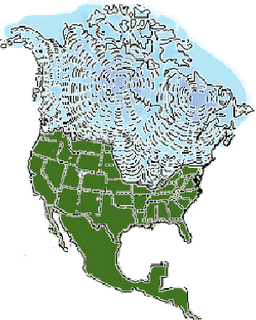I-70 was started in 1956 and completed in 1992. It ran parallel to U.S. 40 and was the first major interstate project for the United States. Thousands of travelers stop to rest from their long drives across the country and the state of Indiana. 
I-70 Miles Per Hour Through The Wetlands
Most of Indiana's wetlands are found in the northwest and southwest corners of the state. Wetlands came about either by creating them, a process called mitigation, or in Indiana, carved out by the Wisconsin Glacier. 
Once Indiana's wetland covered 25% of the state. Huge numbers of waterfowl rested and fed Indiana wetlands.
Historically, wetlands were considered unproductive "wastelands." In the mid-1800s, dredging machines dug ditches and began to drain Indiana wetlands.
There are four types of Wetlands:
Marsh: Marshes are found along the edges of lakes or rivers. Plants are mostly "soft."
Swamp: Swamps are often associated with rivers or isolated depressions.
Bog: Bogs have no inflow or outflow. Most water comes through precipitation.
Fen: Fens tend to be alkaline. They receive drainage from mineral-rich groundwater.
Many wetlands do not have standing water in them. Water may be below the surface, saturating the soil.
Wetland bacteria do not use oxygen to survive. Instead, they use the sulfur in the soil. 
There are three characteristics every wetland must have:
1. Water: Water must be present at or near the surface for a determined period.
2. Wetland Soils: Wetland Soils are saturated with water and lack oxygen
3. Wetland Plants: Wetland Plants have adapted to soils lacking oxygen.
Wetland plant life has to use their roots to draw oxygen from the oxygen-rich soils of the wetlands.
As we move into an age of information, technology, and a growing need and desire to return nature to the way it was before, man interfered with its old and ancient methods, which worked successfully far beyond the time of man. We are seeing these precious resources return, and not only our environment but we are benefiting from it.
Enjoy your travels through the rest of Indiana, and thanks for visiting!
Please Email me the answers to the questions listed below. Posting answers will result in a deleted log and an emailed request to resubmit your find with the answers.
1.) There are four different types of wetlands. What are they?
2.) Look at the two wetland areas. Are there different types of wetlands? If not, or if so, define the type of wetlands they are, and please give your reasoning behind it.
3.) Please post a photo :-)